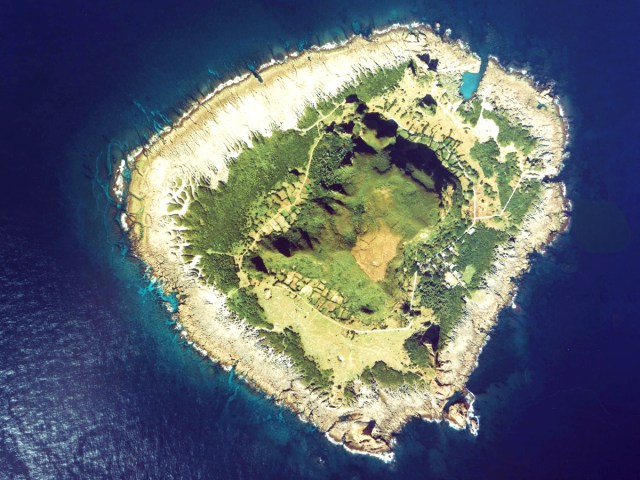There are an estimated 11,000 permanently inhabited islands on Earth, which house some 730 million people. The largest of these islands, by far, is Greenland, which measures 836,330 square miles — over three times the size of Texas. On the opposite end of the spectrum are islands that are incredibly small — to the tune of just a few thousand square feet. Here are five of the world’s tiniest islands that people call home.
5. Kodakarajima – Japan

There are 14,125 islands that make up the Japanese archipelago, including those in the Tokara Islands chain, located roughly 150 miles southwest from the mainland. Of these islands, Kodakarajima — which translates to “small treasure island” — is the tiniest, totaling a mere 0.39 square miles in area.
The island is home to 43 permanent residents, who rely on fishing in the surrounding ocean for both sustenance and to support their livelihoods. While there’s no airport on Kodakarajima, the island can be accessed by boat, including the ferry that connects it with the city of Kagoshima on the mainland. For residents and tourists alike, one of the most popular spots on Kodakarajima is the Yudomari Onsen — a free, 24-hour hot spring where bathers enjoy stunning views of the Pacific Ocean.
4. Dunbar Rock – Honduras

While this tiny island was once home to a private property, it has since been converted into the Villa on Dunbar Rock — a luxurious Caribbean resort where tourists can experience what it’s like to live on an isolated, yet beautiful island located north of the Honduran mainland and just south of the island of Guanaja.
The villa itself spans 15,000 square feet across four floors, taking up almost every inch of space on the island itself. It can be accessed by flying into nearby Guanaja Island and taking a 10-minute boat ride to Dunbar Rock. Those who book a stay here can expect 360-degree views of the surrounding water, a private beach, an infinity pool, an on-call masseuse, and plenty of scenic diving opportunities. According to local legend, the island was once used by the infamous pirate Blackbeard to moor his ship, and rumor has it that his treasure is buried somewhere on Dunbar Rock.
3. Caye Sable – Haiti

Caye Sable is located in the Gulf of Gonâve, roughly 30 miles west of Port-au-Prince, the Haitian capital. The island measures a mere 0.4 acres in size — less than half the size of a standard soccer field. But despite the limited living space, around 250 to 300 people reside on Caye Sable, making it one of the most densely populated islands on Earth.
This infinitesimal expanse reflects some of the issues plaguing Haiti, which is among the poorest countries in the world. For many Haitians, living spaces are hard to come by and conditions are far from ideal. Though there aren’t any tourist sites to see on Caye Sable, it can still be accessed by taking a small fishing boat from the nearby village of Petite Anse.
2. Nichtarguér – France

On the island of Nichtarguér, located along the Rivière d’Étel in northwestern France, you’ll find a single stone building with a bright blue door that was originally constructed in 1894. It was built to serve as the residence for a caretaker of a local oyster farm, and it has maintained that purpose ever since. The size of Nichtarguér varies depending on the time of day and surrounding tide. At low tide, it can measure 328 feet in length, compared with high tide, when the island shrinks to a mere 82 feet long.
Located just a stone’s throw away from Nichtarguér is the picturesque island community of St. Cado, a circular island with a diameter of about 200 feet. Here, you’ll find fascinating historic sites such as a medieval-era church dating to the 11th century. St. Cado also has several hiking trails to explore the natural beauty of this small French commune.
1. Hub Island – New York

Hub Island is part of the Thousand Islands chain, located in upstate New York in the St. Lawrence River. At just 3,300 square feet in total area, the island is also aptly known as “Just Room Enough Island.” Hub Island is the smallest inhabited piece of land among all 1,864 islands that make up the chain, and most sources consider it to be the smallest inhabited island in the world.
The land was uninhabited for many years until it was purchased by the Sizeland family in the 1950s. They planted a single tree on the island and also constructed a tiny cottage that still stands today. The house takes up nearly every inch of available room on the island, so the “Just Room Enough” nickname is fitting. Hub Island remains private property, but anyone is welcome to boat down the St. Lawrence River and see it from the water.
More from our network
Daily Passport is part of Inbox Studio, which publishes content that uplifts, informs, and inspires.
















